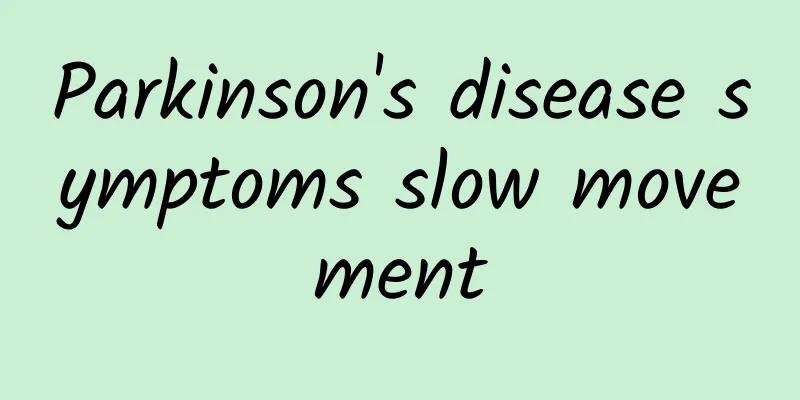Lower extremity venous thrombosis

|
Perhaps many people have not heard of the name of lower limb venous thrombosis, but this disease is a relatively common vascular disease in life and can cause great harm to the human body. If lower limb venous thrombosis occurs in the human body, it will pose a certain threat to labor and life. We should learn more about the symptoms of this disease. Understanding the disease is a kind of protection for ourselves. Some symptoms of lower limb venous thrombosis are very obvious. If this disease occurs in a limb, it will cause swelling of the affected limb. In this case, you should go to a regular hospital for treatment. Timely treatment of the disease will have certain benefits. 1. Swelling of the affected limb This is the most common symptom after lower limb venous thrombosis. The tissue tension of the affected limb is high and there is non-pitting edema. The skin color is reddish and the skin temperature is higher than that of the healthy side. When swelling is severe, blisters may appear on the skin. The location of swelling varies depending on the location of the thrombus. Patients with iliac-femoral vein thrombosis have obvious swelling of the entire affected limb; patients with calf venous plexus thrombosis have swelling only in the calf; patients with inferior vena cava thrombosis have swelling in both lower limbs. If the thrombosis starts in the iliac-femoral vein, thigh swelling will appear early. If it starts from the calf venous plexus and gradually extends to the iliac-femoral vein, the calf will swell first and then the thigh will be affected. The swelling is usually heaviest on the 2nd or 3rd day after onset and then gradually subsides. When the disease subsides, it first manifests as a decrease in tissue tension, and then a gradual reduction in the circumference of the affected limb, but it is difficult to return to normal unless the thrombus is completely removed early. In the later stage of thrombosis, although some veins have been reopened, the venous pressure in the affected limb is still high because the venous valve function has been destroyed, and its manifestations are similar to primary lower limb valvular insufficiency. 2. Pain and tenderness There are two main causes of pain: ① Blood clots cause inflammatory reactions in the veins, causing persistent pain in the affected limb. ② The blood clot blocks the veins, obstructing the venous return of the lower limbs, causing swelling and pain in the affected limbs, and the pain worsens when standing upright. Tenderness is mainly confined to the site of inflammatory response to venous thrombosis, such as the femoral vein or calf. Calf gastrocnemius tenderness is also called a positive Homans sign. Since squeezing the calf may cause the blood clot to dislodge, excessive force should be used during the examination. 3. Superficial varicose veins Superficial varicose veins are a compensatory reaction. When the main vein is blocked, the venous blood in the lower limbs returns through the superficial veins, causing the superficial veins to dilate compensatorily. Therefore, superficial varicose veins are generally not obvious in the acute phase and are a manifestation of the sequelae of lower limb venous thrombosis. 4. Swelling of the thigh When DVT of the lower limbs extensively involves the intramuscular venous plexus, the iliac femoral veins and their side branches are completely blocked by blood clots, and tissue tension increases extremely, causing lower limb artery spasm, limb ischemia, and even necrosis. Clinically, it manifests as severe pain, shiny skin of the affected limb, accompanied by blisters or blood blisters, and the skin color is bluish-purple, which is called painful cerulea dorsi (Phlegmasia Cerulea Dolens). It is often accompanied by arterial spasm, weakened or absent arterial pulsation in the lower limbs, decreased skin temperature, and then a high degree of circulatory disorder. The patient has a strong systemic reaction, accompanied by high fever, mental weakness, and is prone to shock and wet gangrene of the lower limbs. 5. White swelling of thigh When acute deep vein thrombosis occurs in the lower extremities, lower extremity edema reaches its highest level within a few hours, the swelling is concave and high tension, and the obstruction mainly occurs in the femoral venous system. When combined with infection, the stimulation causes continuous spasm of the arteries, and swelling of the entire limb, pale skin, and dilation of the subcutaneous venous network is seen, which is called painful femoral white seed (Phlegmasia Alba Dolens). The above is an introduction to the symptoms of lower limb venous thrombosis. I hope that after reading it, you can better understand some of the manifestations of this disease. In life, if we learn more about diseases, it is actually a way to protect our physical health, which is actually a kind of protection for ourselves. |
<<: Reasons for low sperm survival rate
Recommend
What medicine can prolong the duration?
In daily life, many men are particularly concerned...
What foods can’t babies eat when they have diarrhea?
Babies who are in the developmental stage have re...
What to do if you have left-sided headache and left eye pain
Left-sided migraine and left eye swelling are als...
Bad breath and thick tongue coating, three folk remedies to help you deal with it
Once the symptoms of bad breath and thick tongue ...
Parkinson's disease symptoms slow movement
The main symptoms of Parkinson's disease incl...
Glucose tolerance screening precautions
Glucose tolerance screening, also known as glucos...
What tea to drink to cleanse the intestines
Drinking some tea properly on a regular basis can...
Causes of acne on the body
What causes acne on the body? Acne is very common...
Chinese medicine prescription for depression
Depression is a disease that is relatively easy t...
Attachment has echo
We all know that many women have gynecological di...
What causes a runny nose with blood?
We all have runny noses at normal times, but some...
What are the traditional Chinese medicine treatments for bronchitis?
Bronchitis is a relatively common respiratory dis...
What are the benefits of drinking Chuanbei honey water?
Honey is a very sweet food, and it is a golden li...
Baby's eyes are red
Red blood streaks may be caused by fatigue. You c...
What medicine should men take for urination difficulties
Men’s difficulty urinating is most likely caused ...









